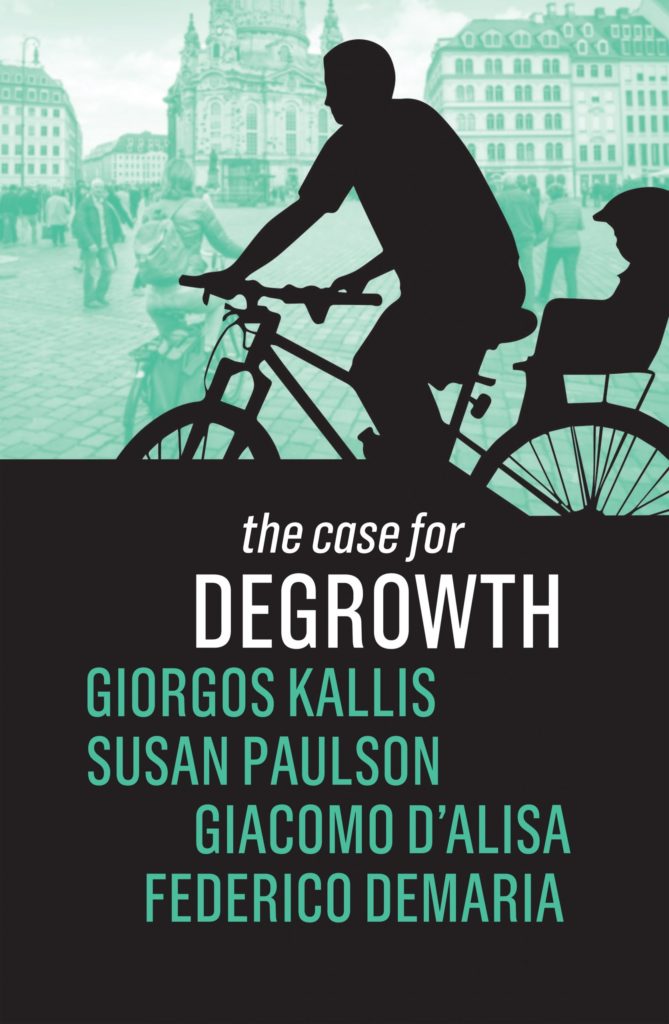Piffard, NY. If the future seems a little less certain than it did in, say, February of this year, well, my advice is to smile and try to be at peace in the flux. The future as something solid, almost unidirectionally arrived-at, something we could reach out and grab, has always been, ontologically speaking, a blinding mirage anyway. And though the Goddess Tyche, (chance), has been “on the ropes” as it were, since at least the industrial revolution, taking repeated hammerings from the scientists, engineers and economic planners of all stripes, she is now making a roaring comeback. This is not because the planners are letting-up–No.That is not their MO.– but because of their adolescent pride, control issues, and ineptitude. Even competent planners can only keep Tyche down for a time; she cannot be controlled forever.
Though this time is chaotic, it doesn’t necessarily have to be all gloomy. Besides, the future as we had been trained to believe in it, with its continued manifestation as some ghastly agglomeration of pavement, work hours and screens, was the very definition of a “dead” end anyway, fit only for zombies who had been making a good cultural showing of late as the monstrous image of the future we had been creating. Instead of the future being a sort of baby boomer retirement writ large–an “End of History” arrived at after extended travel along strip-mall-bordered roads to a gated community somewhere in the Southern US, with early-bird specials at the IHOP and plenty of pickleball–Tyche is reasserting herself, in her nature, as a boundless tree with various outcomes, branching out in all different directions, a time replete with possibilities. And like all things awesome, she can also be a bit scary.
An apt symbol or, to be more precise, “archetype” (indeed, another way of restating the foregoing is by saying that we are, again, re-entering religious or “mythological” time), of this historical moment is the old Welsh image of the Pair Dadeni or the Cauldron of Regeneration. Like that archetypal cauldron, this period of Coronavirus and assorted electoral happenings is filled with “mixings-up” of life and death, of things in mortal decay and things being born or, as described by John Cowper Powys in a 1946 essay of that name, “Pair Dadeni” as a “phenomenon whose peculiar luster combines the frivolous phosphorescence of decomposition with the ghostly pallor of the hour before dawn.” Though the disruption, suffering, and death are real, word on the street is that the canals of Venice don’t look like cigarette-filled cups of moldy coffee anymore. And the skies over Cali, when they’re not filled with apocalyptic wildfire smoke, are generally looking a bit clearer (even as the streets below are looking, and smelling, a bit dirtier). In my own small town, parents are more stressed about school and their children, but they are also spending more time with them, and finding meaning in that. Bubbling up in the stew of this time are pain and anxiety with their attendant disorders like addiction and depression, all very serious, but countless aspects of the nearly extinct humane dimension of life have appeared in the cauldron too. I can’t count the number of new gardens in town, nor the number of kayaks that are daily out on nearby Hemlock Lake where no motorboats are allowed.
It seems scary, but remember that this ‘mixing-up of life and death” was also characteristic of the mythic “Golden Age” of history, which is also called “Saturnian.” The Patron God of that time, Saturn, wielded, and was symbolized by, a sickle that was used for the harvest, but it also cut in another direction as the same garden tool was famously used by Saturn in castrating others, thereby increasing feelings of isolation and decreasing human fruitfulness. Lest you think these myths are irrelevant to today’s concerns, note that in Sicilian, the word for sickle is “fauci”. And doesn’t the bubbling surface of a mythological cauldron look a bit like the sun’s corona? Yes, the cauldron is on the boil, my friends, and we might as well use our old maps as fuel for its continued bubbling.
The word “degrowth,” this new book, The Case for Degrowth, and the larger Degrowth movement it partakes of aligns well with the evocations of the mythical “Pair Dadeni.” The authors make this clear in their preface, which was adapted just prior to publication for some of the new realities of Corona time: “History often evolves with punctuations; our analysis shows how periods of paralysis can reach a tipping point, when unexpected events open new possibilities and violently close others.”
They continue:
The current situation is terrible, not because carbon emissions are declining, which is good, but because many lives are lost; it is terrible not because GDPs are going down, to which we are indifferent, but because processes in place to protect livelihoods when growth falters are grossly insufficient and unjust.
“GDPs are going down.” Hold that fact, as this is actually the center point (often described as an “umbrella concept”) amidst the nexus of ideas in this concise book, with a very clear and thoughtful FAQ as its conclusion, which has as its purpose the goal of putting before a larger audience the ideas of the movement which have, so far, been circulating in circles more circumscribed. Though having points of contact with various Green New Deals, it is markedly different from them in that our authors are too smart to buy the “rabbit-out-of-the-hat” idea that we can decouple economic growth, including even most plans for “green growth,” from increasingly extreme environmental pressures. For our authors, an actual reduction in the GDP (and GNPs) is not only descriptive of parts of the economy at this time but can actually be framed, despite our growth indoctrination, as something that can be constitutive of an increase in the quality of life and well-being! In a word: degrowth. What do socialism, communism, capitalism (and cancer, I might add) have in common? Growth. And what do green growth and non-green growth (and cancer, I might add) have in common? A designed compound rate of growth. To our authors, what unites all these ideologies is more important than what divides them, and they stand for something different.
Everybody has heard stories of the backwoodsy guy who, at the founding of the United States, invested 5 cents and was promised a paltry but compound return per annum on that simple coinage and whose descendants (had they not cashed in early) would today have more money than all the world’s current Sultans, Gates, and Bezos combined. Here’s the description of that same subtly-monstrous and cancerous “exponential function” used as an example in this book:
When a delighted King in India asked the inventor of chess what reward he wanted, the inventor demanded a modest-sounding payment: one grain of rice on the first square of the chessboard, two on the second, four on the third, doubling each time. On the sixty-fourth square, the king would have to put more than 18,000,000,000,000,000,000 (18 billion billions) grains of rice on the board.
Halfway through the chessboard, and even further, the King still probably thinks he’s in the catbird’s seat, but little does he know! Compound growth has a way of sneaking up on you (and countless college graduates) and it therefore confuses so much public discourse and understanding. It seems pretty innocuous until you wake up and realize you are in way over your head. Reduce growth rates of the GNP, or interest rates on your college loan, for example, from 10% per year to 3%, and you still have a doubling of the size of the economy or your debt every 24 years! Our authors claim that economically, politically, or environmentally (green or ungreen) our earth just cannot handle that. Nor, I might add, can we exhausted plebeians who just want a tiny corner in this great big world to call our own and raise a family and a few chickens. The economic growth treadmill runs too fast. Our authors claim that “green growth” is like trying to walk down an escalator going up at an increasing rate. In a nutshell, Degrowthers make a bold case that a future worth living is not about doing more with less, it’s about doing “less with less,” and insofar as the authors seem to be in their wheelhouse describing our Pair Dadenia situation, it’s not at all hard to sense an idea, or “umbrella concept,” whose time has come.
Books written by committee, as is this short textbook of sorts, are filled with both blessings and curses. Blessing: Each sentence has been analyzed, reworked, condensed, and filled with import. Curse: Each sentence has been analyzed, reworked, condensed, and filled with import. As an end result, this book is an insightpalooza but, like the finale of a fireworks display, it’s packed with light and yet also a bit overwhelming at the same time. (Therefore, and again, the FAQ at the end provides a nice unpacking and distillation.) There’s a wonderful example of this phenomenon in the mention that is made of what I think is a great, almost Chesterton-like, insight embraced and mentioned by our authors; one which is almost symbolic as it says much more than it says. Namely, that and for the love of the earth, instead of the idea or practice of there being frequent flyer awards, there should be frequent flyer punishments:
Related degrowth-minded proposals include a moratorium on new fossil fuel development; a ban of fossil fuel advertising; the phase-out of fossil fuel production, with just transition for workers in dependent industries; frequent flier levies; embargoes on any expansion of road networks and airports; policies for car-free cities; tight emissions standards for new cars and power stations; passive-house standards for new houses; and efficiency standards for rented properties. (emphasis mine)
Now contrast this framing of the idea and its impact with a Tweet from another Degrowth writer and thinker, Jason Hickle, from June 30, 2018, the day that Flightracker recorded what was at that time, (pre-Corona), the most flights on a single 24 period (202,157 flights) in history:
Yeah this is madness. Here’s a quick interim solution: one tax-free flight per person per year, and every flight after that is taxed exponentially until even the richest frequent flyers squeak like piglets.
The impact is quite different. The book is something like a zip-file that leads to an informational opening which, unpacked, is much more vast. Pope Francis’ worldview comes in for favorable mention, and so do versions of UBIs. If some notion of universal basic income is too “Yang” for you, at least have the courage to admit that, in the Yin direction, especially in a highly mechanized society where there are fewer work hours, lies social Darwinism, or what Tolstoy called the “Law of Violence.” I liked this paragraph:
There is no technological or policy fix that can generalize to nine billion people the material standard of living currently enjoyed by a minority at high cost to others. That means that either institutions of sharing toward equitable wellbeing will be developed and expanded, or else large parts of the global population will be expulsed as expedient surplus. The most immediate case for degrowth that we try to communicate in this book is that a modest life based on cooperation and sharing is desirable in and of itself. Even if endless growth were economically, socially, and ecologically sustainable, it would still not bring the fullness of human life that we seek. The case for degrowth is not about martyred self-denial or constraining human potential; it is about reorienting socioeconomies to support collaborative and creative construction of lives that are pleasurable, healthy, satisfying, and sustainable for more people and more places. End goals of degrowth – dignified work, less selfish competition, more equitable relationships, identities not ranked by individual achievement, solidary communities, humane rhythms of life, respect for natural environments – are also the means through which people exercise and embody, day by day, the lifestyles, institutions, and politics of degrowth worlds to come.
Now a certain type of thinker has trained themselves to smile cynically at words and phrases like “collaborative,” “sharing,” and “equitable relationships,” and even at the cosmopolitan and imaginative view that strains to see the life of a person living in Vietnam or Ghana as equal in value as their own (this is to be distinguished from that abstract love of “humanity” which actually works against the imagination). Yet we would do well to recall Wendell Berry’s timeless plea that, in assessing our much-vaunted progress, some of which is very real, we must needs always look at the “net,” which includes the factoring in of all economic, political, and social “externalities.”
Looking away is adolescent behavior. Some countries may have reduced their carbon emissions, which is worth cheering, but too often so much of this “progress” in their self-congratulatory record keeping (reports being more real, for so many scientists, than reality itself) is offset through the externality of some other country producing all of its junk and smog. Or within a single country we have the scam of “carbon offsets” which allow a company in California to excessively pollute provided they retain on their books an unmaintained and wildfire-prone forest in the eastern part of the state. Ernst Junger’s magisterial On Pain describes Modernity itself through the singularly important phenomenon of the off-shoring of pain, which is a symbol of all externalities. We get our boneless-skinless chicken breast while the slaughter is out of sight and out of mind, like the antiseptic anesthetizing of so many of our elderly and unborn in faceless buildings on the outskirts of town. The cumulative effect of all of this off-shoring is inhumanity, cruelty, and ugliness.
There is a very paradoxical experience that seems to wonderfully infect many of these Degrowth authors, which is the realization that the more one grows up and incorporates into themselves and into their thinking the various “externalities” of life (kind of like meditation on “sins of omission” in the Christian faith), the more one speaks the seemingly naive language of peace, love, and understanding, and demonstrate in their life and words the wisdom of what Paul Ricouer called, wonderfully, “the second naivety.”
Three of the four authors of this book write from Spain, and I find it gladening to sense the prophetic spirit of Cervantes hovering over these pages, as if on cue, as we pass at this time through the Cauldron of Regeneration from the Age of Pisces into the Age of Aquarius. The group’s highly intelligent and grounded tilting at windmills makes the seemingly impossible possible. With its prioritization of “use-value” over “exchange-value” the argument presented here has the critical acumen of Ivan Illich, the magnanimity of Cervantes, and the energetic spin on Christian faith characteristic of another Spaniard, Miquel de Unamuno. While rooted in science, sociology, and history, they see clearly and soberly the mess we are in, and they lift up this mess as they speak of such things as “the commons” and “commoning practices” (with examples ranging from traffic to food in places from Barcelona to Mississippi) as naturally as Don Quixote saw and raised-up the beauty in prostitute Aldonza. Some of these ideas are in conception stage, some are half-born and a number have already started walking. As an accompaniment to reading, the understandably skeptical in the area of monetary policy (How do we pay for this???) should read about what the movement has to say about limits, and the very notion of scarcity itself, in addition to what it has to say about what’s happening to money in our time. A dream YouTube for me would be watching these Degrowthers engage with the thinking of Guido Preparata and with the potential of perishable currency.
The downside to this chaotic time is that everything seems to be crashing and burning. The upside of reentering mythological/religious/archetypal time is that the power of poets over planners and of intelligent dreamers over lobotomized engineers is asserting itself again. Lurking right below chaos is often a nascent order, a new and different order, just waiting to be summoned. Our four authors say, “Writing this book is an act of care. Care for family, friends, and fellow citizens striving to contribute and find meaning in the face of historic challenges. Care for people and places around the world struggling to survive the burdens and damages of growth. And care for each other, as collaborators and co-authors.” During this time, replete with fears that society itself is unraveling, fears which have driven many people to wit’s end and contemplation of suicide, this showering of care is well received.






2 comments
Nate Cole
Imagine a time after Lincoln when the Federal Government would not take this time as an opportunity to expand their power dramatically. Decisions have been left to the states, which is practically a miracle. In my home state of New York, you see F*CK Cuomo written alongside the menus, with little to no one gaining respect for distant authority. Maybe a little optimism is useful, so we can take advantage of the changing tides and go towards a healthier future.
Brian
“The downside to this chaotic time is that everything seems to be crashing and burning.”
Really? Because to me it looks like central powers are consolidating more and more and more power. Your local mayor is probably completely powerless to do much of anything, but the higher up you go, the more power there is, with absolutely no repercussions ever to be paid for incompetence.
Comments are closed.